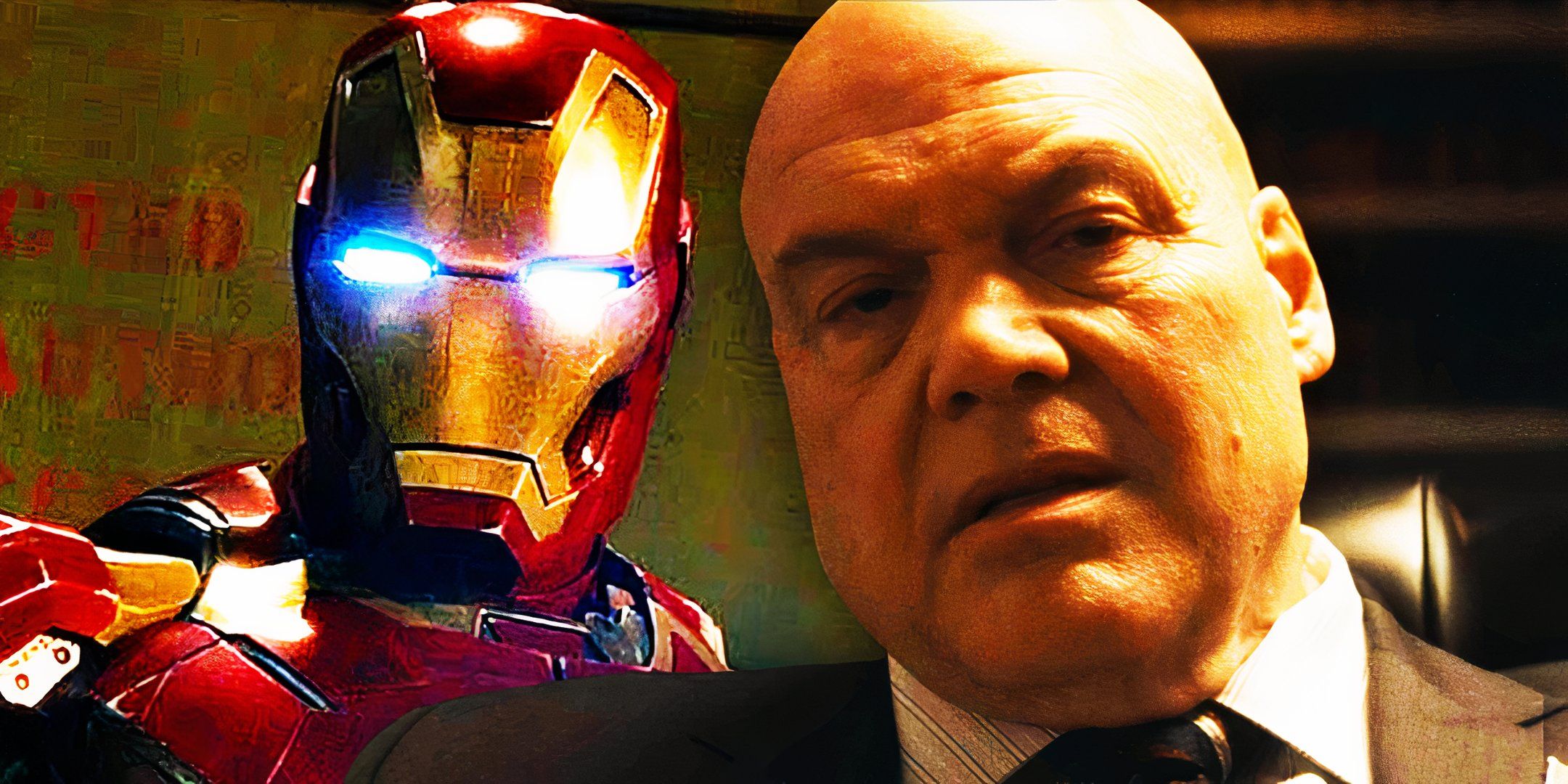10 Best Calvin and Hobbes Comics That Discuss Death Without Pulling Their Punches
Summary Calvin and Hobbes tackled heavy topics like death with a special kind of charm, providing emotionally-rich narratives and relatable humor that helps readers confront the timeless subject of mortality.
Bill Watterson's comics highlighted the existential dread of life through Calvin's conversations with Hobbes, balancing emotionally deep, resonant musings with lighthearted punchlines about life and death.
Calvin and Hobbes navigated even the darkest topics with grace, showcasing the characters' ability to process all parts of life, including the loss of it.
Bill Watterson's Calvin and Hobbes remains one of the most beloved syndicated comics of all-time. The series is a love-letter to childhood, covering all the simplicity and hardship that comes with growing up. Watterson proves to understand this phase of life, not just the tender moments, but also the difficult lessons that make it especially formative.
Calvin and Hobbes tackled the concept of death quite a few times – despite it a topic that is just as hard to process as it is to communicate, especially in a comic strip. Yet, Watterson valued emotional storytelling, and with a bit of risk-taking, created one comic that changed Calvin and Hobbes forever.
Though the strip's reflections on death were at times heavy, they gave Watterson access to emotionally-rich narratives, ones that continue to define the comics' legacy today. As any fan of Calvin of Hobbes knows, life is not always great, and sometimes it's downright heartbreaking.
Related Marvel's Calvin and Hobbes Parody Puts Gory Twist on Wholesome Comic Calvin and Hobbes is a famously family-friendly comic strip, but Marvel Comics' dark parody of it utterly corrupts its innocence with gory violence.
10 "This Business About Death"
Hobbes Gives Calvin A Reason For Living
Calvin and Hobbes often presents the titular Calvin questioning his world, typically whatever he finds most unfair, or absurd. The essence of the series lies in these conversations, which fluctuate between the mundane (homework, sports, parents) and the downright philosophical. This strip dives right into it, prompting readers with one of life's greatest questions, the existential quest for life's meaning.
The strip claps back with a classic take from Calvin's best friend and stuffed tiger - maybe it's just seafood. Calving and Hobbes succeeds not by preaching answers, but by filtering these hard concepts through the charm of its characters. Here, it's less about death, and more about how Calvin's existential dread is dismantled by Hobbes' passiveness. While Watterson seems to instigate a huge conversation with such a topic, he ends it three panels later with a good laugh.
9 "Kind Of A Stupid Game, Isn't It?"
War Is No Fun
Like any six-year-old boy, Calvin loves to play pretend, and does so in a variety of fun scenarios throughout the series. Unlike Calvin's vivid fantasies about dinosaurs, this attempt to recreate the thrills of war becomes a one-and-done within the Calvin and Hobbes universe. After laying out the simple rules of the game – "you get hit with a dart, you're dead, and the other side wins" – Calvin and Hobbes engage in a battle, immediately taking each other out.
Some might see this joke as on the nose, but that's the point. The reality of war being a series of senseless killings is as sad as it is painfully obvious. So much so, it only takes three panels for Watterson to contextualize it within the world of Calvin and Hobbes. As the two characters stare at their kill-shots, it's clear there's no winners in this game.
8 "Pittsburgh"
Hobbes' Hilarious Take On The Afterlife
In Calvin and Hobbes, Bill Watterson was apt to use death for quick humor just as much as an emotionally complex narrative. As a result of Calvin’s experience with death, he’s often seen philosophizing about it in passing thought. Sometimes conversations like this reach dark territory, but in some cases, like this, it remains fairly light-hearted.
The deep-thinking Calvin casually throws up the age-old after-life question to Hobbes, who lets it sit in the air for a bit. Out of all the complicated theoretical responses he can give, Hobbes gives “Pittsburgh” as his best shot. Of course, this makes no sense, but Calvin can’t help but entertain what that might mean. It’s a great little riff on the fact that the afterlife is so mysterious, it might as well be a city in Pennsylvania.
7 "The Last Fling Before Things Get Worse"
A Cynical Take On Changing Seasons
Calvin and Hobbes is notorious for its natural landscapes, which, during its syndication, actually changed in accordance with the seasons. With Bill Watterson’s love for nature, it seems like it would be impossible for him not to make a death-related metaphor out of it. The context of autumn serves that exact purpose here, kick-starting a very death-coded conversation.
When Hobbes starts gushing over the changing leaves and low-lit sky, Calvin can’t help but to point out how it's all just dying. The boy has a tendency to be a cynical brat at times, which luckily never seems to faze the ever-positive Hobbes. The tiger is the friend everyone needs in their life, reminding us to soak in the good things before they’re gone.
6 "It's Either Mean, Or It's Arbitrary"
Existential Musings Before Bed
It’s obvious Calvin is not too satisfied with death upon experiencing it for the first time. No matter what explanation his parents give him, he still can’t shake the fact that death makes no sense. Through Calvin and Hobbes, Watterson captures what grief is like for a lot of people, not just kids.
The process is messy, confusing, and leaves one with a good amount of unanswered questions. In this strip, Calvin experiences some strong grief over a baby racoon, and it hits him right before bed. Watterson uses this universally loathed experience to add some relatable humor within one of the comics' more heartbreaking stories. Once again, Calvin and Hobbes proves its ability to navigate even the darkest of topics with grace and charm.
5 Do All Tigers Go To Heaven?
The Sillier Side Of Pondering Mortality
Through the characters in Calvin and Hobbes, Bill Watterson found a brilliant way to explore difficult topics like death. First, there's Calvin, a child who's precocious nature goes hand in hand with open and honest dialogue. Through his best friend Hobbes, Calvin receives an outlet for his curiosities, along with some much-needed perspective.
This Calvin and Hobbes strip features a forthright, yet amusing conversation about heaven, and makes a few valid points. Calvin does not go anywhere without Hobbes, but in the context of an after-life, that might pose some issues. It's a brilliant use of the concept in the context of these characters. Calvin's innocent belief that "maybe tigers don't eat people in heaven" sets up a hilariously punctual objection from Hobbes, who can't deny his desires.
4 "You Just Steer, Okay?"
Calvin Brings Up Death At The Wrong Time
There are moments like in this comic where Calvin and Hobbes can talk about death and still deliver the laughs. It's part of what makes the series so special; Bill Watterson's incredible ability to balance emotions. He also incorporates a list of reoccurring gags: snowmen, evil babysitters, superhero alter-egos, and as seen here, sled riding. This is a popular strip format used throughout the series, commonly used to spice up Calvin's ramblings with quick moving action.
These strips almost always graze the topic of death, typically through Hobbes' sense of impending doom via Calvin's recklessness. In this installment, Calvin gets a little insensitive with his death-related inquiries, scaring his poor tiger friend. If there's one thing the six-year old never seems to learn, it's keeping a filter between his brain and his mouth.
3 "But Don't You Go Anywhere"
Calvin & Hobbes Share A Life-Affirming Moment
This Calvin and Hobbes strip demonstrates how the raccoon storyline, while dark, only enhanced the strength of its titular characters. From this point on, Hobbes is not only there for Calvin’s adventures, but also his greatest tragedies. This proved to be a definitive part of The Calvin and Hobbes legacy; giving the characters space to process all parts of life together, even death.
Watterson also captured a huge part of grief in this strip; the constant need to understand death, which Calvin attempts to do through his mother’s explanation. The reality is still devastating though, especially the thought it could happen to anyone. The final embrace between the characters is an especially heartwarming moment, as he still refuses to let it happen to Hobbes.
Related 10 Weirdest Calvin And Hobbes Comics Of All Time Calvin and Hobbes are known for their weird adventures, but these 10 strips are some of the weirdest ones from the beloved comic strip.
"This proved to be a definitive part of The Calvin and Hobbes legacy; giving the characters space to process all parts of life together, even death."
2 "What A Miracle Life Is"
A Very Serious Reflection On Life & Death
Calvin and Hobbes is famous for its ability to pivot into more serious territory. In this somber installment, creator Bill Watterson launches into the subject of death with a haunting depiction of a dead bird. This image reflects Watterson's incredible talent, both as an artist and a risk-taker. Pulling no punches, the bird sets the tone for a particularly melancholic moment in the series.
When he's not consumed by his imagination, Calvin is constantly pondering the world, with a tendency to get cynical. In this scenario, he points out the beauty of life, its fragility, and the irony of not appreciating it until its gone. Watterson ends the rant with one final sting; no laughs, just the idea that some things will never make sense.
1 "What A Stupid World"
Calvin Sums It All Up
The raccoon story is Watterson's first time exploring death in Calvin and Hobbes, producing one of the more tragic moments in the entire series. In events inspired by Watterson's life, Calvin discovers an injured raccoon and gives it to his parents. The story proceeds with Calvin anxiously awaiting its recovery, not understanding the reality at hand.
When his Dad delivers the news that the raccoon didn't make it, a heart-broken Calvin is forced to conceptualize death. In this strip, Calvin wrestles with the devastation of grieving. He expresses feelings that are universally shared by anyone who has lost - the irony, the confusion, and the pain. It's a heartbreaking moment, but one that also enriches the characters and the world around them. Without these moments, it's doubtful Calvin and Hobbes would have the same beloved legacy.











COMMENTS